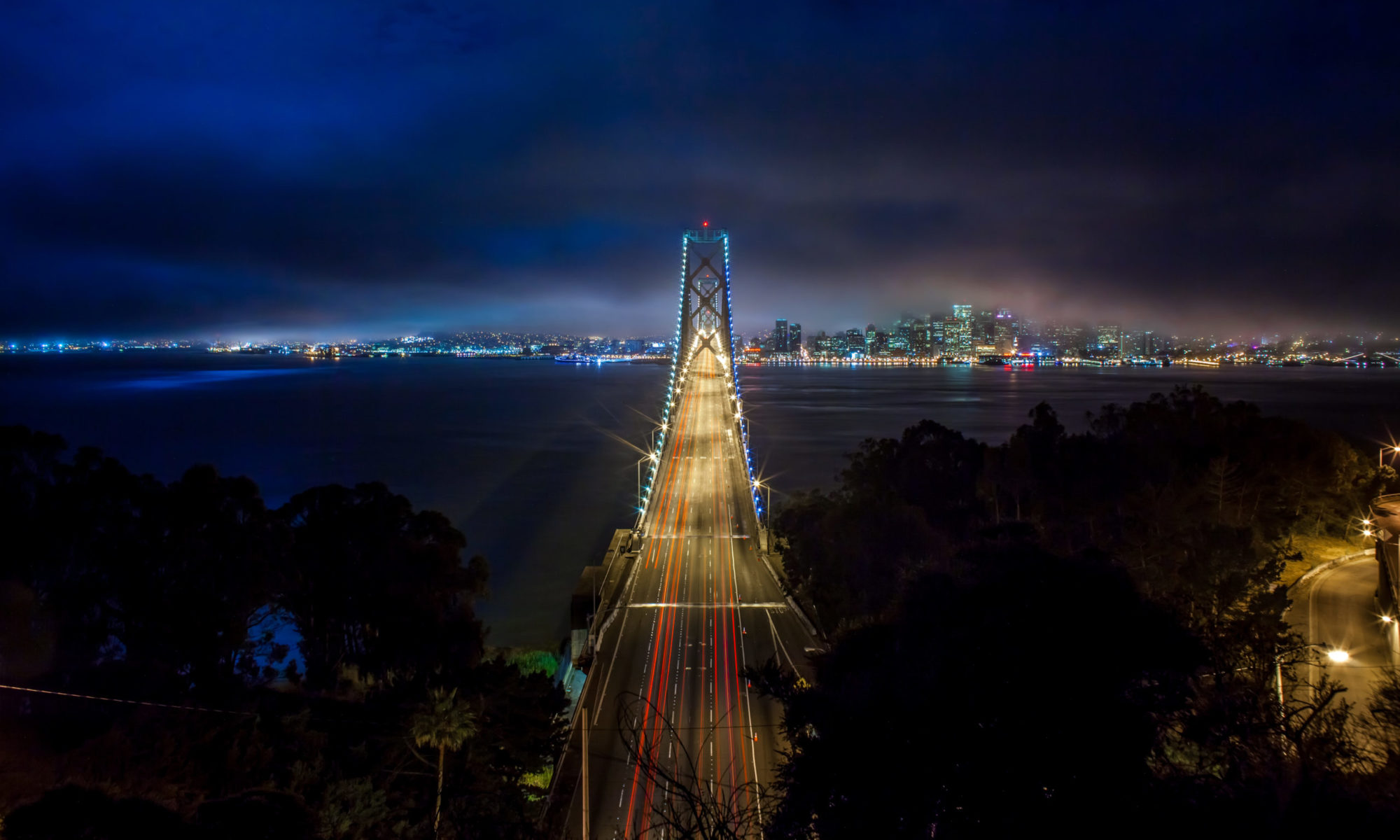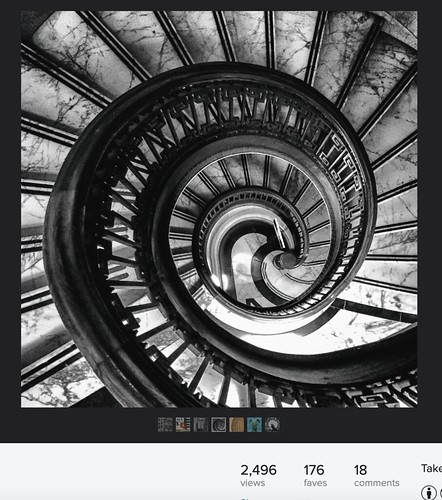
“What is more pleasant than the benevolent notice other people take of us, what is more agreeable than their compassionate empathy? What inspires us more than addressing ears flushed with excitement, what captivates us more than exercising our own power of fascination? What is more thrilling than an entire hall of expectant eyes, what more overwhelming than applause surging up to us? What, lastly, equals the enchantment sparked off by the delighted attention we receive from those who profoundly delight ourselves? – Attention by other people is the most irresistible of drugs. To receive it outshines receiving any other kind of income. This is why glory surpasses power and why wealth is overshadowed by prominence.”
Caterina Fake, Co-founder of Flickr, 2005.
Over the course of the past 4 years, about every 2 years or so I’ve written a blog post that has been one of my most popular entitled “Top 10 Ways to Get Attention on Flickr.” It’s been a few years, Flickr’s changed a bit, and so I thought I’d take a bit of time today to outline some of the techniques that active power users use on Flickr to get more attention for themselves and their photos.
Fundamentally it comes down to a pretty simple equation:
quality photos + reciprocation≤ = attention.
But there are lots of other little tricks and tips, so let’s get right into them.
1. The order that you publish your photos in matters — a lot. A lot of people will take 50 snapshots of that killer sunset on their vacation and then upload them at random to flickr. Some are better, some are worse. At Flickr, those that call you contact predominantly only see your last photo uploaded or your last 5 photos uploaded (depending on their settings) from the popular “your contact’s most recent uploads” page. The other 45 are effectively buried. Always upload what you feel are your best, strongest, etc. photographs as the last five and save the very last spot for the photo you want to promote the most.
2. Explore. Explore is a section of Flickr where Flickr highlights what they feel are 500 interesting photos every day.
Flickr claims to have a “magic donkey” formula which picks the photos for Explore. This “magic donkey” is really just an excuse though to avoid transparency/accountability about Explore. In general, the more activity a photo has (activity = faves, comments, notes, blogged, etc.) the more likely it is to show up in Explore. By putting your best foot forward (see item 1) and by focusing on promoting a popular photo of yours on a given day, (see below) it just might get there.
3. Promote your photos outside of Flickr. What are you doing to promote your photos outside of Flickr? Some things are super, super easy and involve no active participation on your part other than setting something up. Popular content aggregators on the web allow you to publish your Flickr photos out of Flickr, with valuable links back to your photos on Flickr.
Have you configured Flickr Tab on your Facebookery page yet? Why not? It’s free and easy.
Have you signed up for Google Buzz yet? Google Buzz does a great job presenting your Flickr uploads and has a killer lightbox feature that allows people to see your photo BIG (if you allow it) on Google Buzz. I’m faving more Flickr photos that I’m finding on Google Buzz these days than from any other source. I fave more photos from Google Buzz than even Flickr itself.
Have you linked your stream to a FriendFeed account yet?
How about a photoblog? Anyone can set one of these up. They are so easy. And they have cool widgets that can do a lot of automated things for you. Check out the widget I’m using for my Flickr photos (to the right over there). It’s called Fidgetr. It automatically pulls in the six most recent photos from my “10 faves or more set” on Flickr, making sure fresh new photos are constantly being published to thomashawk.com. Don’t those large thumbnails rock!
4. Avoid watermarking, small-sized low-res photos, frames and other gimmicky crap. People don’t want to see this stuff. It’s a turn off. It pushes them away. Yes, yes, I know, you cry, but the thieves, the photo thieves, they all want to steal from me. GASP!
Get over it. You know what happens when people steal your stuff? Recently a friend of mine had an image of hers taken by a commercial entity. Do you know what we did? We contacted them, and after a little arm-twisting they paid her $700 for her photo. You know why? Because they had to. Because she could have sued them if not and probably gotten a lot more than $700 if she was inclined to put the time in it. Courts award statutory damages (not actual damages) for copyright theft. Trust me. If you like getting paid $700 for your photos, you WANT people to steal them. Put a big sign on the photo. “Steal Me, I Dare You.”
With tools like Tineye, it’s getting easier and easier and easier for you to find unauthorized commercial use of your photos on the web.
Sure, some dude is going to print up your big bouquet of sunflowers shot and hang it in his living room to impress his friends while they drink beer and watch football and you’ll never find out about that use. Trust me, that dude wouldn’t have paid for your photograph in the first place anyways.
As a byproduct, uploading full, glorious, high res, original photos to Flickr gives you one more backup of your precious photos in the cloud.
5. Moooooooooooo. Do you know about moo cards? Get some. They’re cheap — well, at least the little ones are cheap. Give them to everyone you can. When you are out and about and people talk to you about your photography say (in your best Jesse Pinkman from Breaking Bad voice possible) “Hey Yo, I’m slinging this camera, check me out here Yo,” and hand them a moo card. Trust me, it works.
6. Groups. Most groups on Flickr are a waste of time. Dead groups where photo whores dump billions of photos in dead pools that nobody cares about and nobody sees. Your photos are quickly buried deep, deep, in the pool, never to be seen or heard from again. Avoid these groups. They typically have names like “Baskets! Show us all your photos of baskets!” or “You Say Tomato, I Say Tomato, show us all your photos of tomatoes!” Don’t just dump your photo into 30 random groups.
Instead pick a few meaningful groups and actually hang out there and interact with people. You might consider a local group for where you live. Or a photo critique group. Or whatever. But find a few active groups (meaning several new threads are engaged in a day) and participate. I belong to a number of groups on Flickr, but 95% of my Flickr group time is spent in the critique group DMU. (Note, DMU is uncensored and not for everyone. Remember above where I told you that Flickr nuked one of our groups? yep.)
7. Fave it Forward! Have you heard of Billy Wilson? Because if you haven’t, you will soon. Not to be confused with his second cousin and other Flickr legend Billy Warhol, Billy Wilson is the original Flickr fave machine! Billy has favorited more photos than anyone else on Flickr and he’s showing no signs of slowing down. Want to know what happens when you fave almost 200,000 photos on Flickr? Just check out Billy’s stream. How’s that for getting some attention? Fave Billy Fave!
Now, you don’t actually have to copy the Billy Wilson favoriting machine. He’s an original and that’s his gig. But. Don’t be stingy with your faves either. If you like something fave the hell out of it. You can start here at my “10 faves or more set” if you’d like. You have an unlimited amount of faves to give out on Flickr. People love getting faves. People reciprocate.
Be like Billy, fave it forward.
Same goes for comments too. If you like something say so. Maybe you can be the next “nice photo” guy. Or maybe you can be known as that super hot chick who writes deep, meaty, insightful, witty, quirky comments on people’s photos — especially then, you’ll be loved.
8. Tag for discovery. You know how people find many of your photos? Search. Don’t be “that guy” who tags the 300 most commonly used keywords to your photos no matter what they are. I don’t want to see that photo of your bikini clad girlfriend when I’m searching for puppy. Good boy.
But. Be descriptive. Be sure to tag the place the photo was taken. The subject matter. Anything relevant that people might use to search for your photo. Consider geotagging as well. The more discoverable your photos are, the more likely they’ll be seen on Flickr.
Oh, also keyword at the file level, not on Flickr itself. It’s much faster to keyword and geotag that way and also when Flickr ends up nuking your account (KABOOM!) you won’t lose all of those tags and geotags that you worked so hard on adding to your photos. When you tag/geotag at the file level, these tags/geotags are automatically populated at Flickr when you upload your photos. Read about my workflow here for more on that.
9. Are you allowing the search engines to index your photos? If you aren’t, you should be. You can check your settings on that here. I’d estimate that about 20% of the traffic to my own Flickr photos comes from search engines. Oh, and while you are in your settings, you might want to take a second and turn safe search off, we’re all 18+ adults here right, even if Flickr does treat you as a child by default? Filtered Flickr sucks.
10. Certain subjects just seem to garner more attention. In general I’ve found that certain subjects tend to do better on Flickr than others. Your (and my) Egglestonian masterpiece of the sidewalk curb? Not so much.
But. Subjects that seem to garner a lot of attention. Attractive women (number one attention getter on Flickr, especially self portraits), motion or blur, silhouettes, images with stories in the description, some HDR, bokeh, abstract architectural photography, bridges, cityscapes, artwork by famed graffiti artist Banksy, you get the idea.
Also sometimes an interesting looking thumbnail will pull people in as well.
Well there you have it. 10 tips to get you more attention on Flickr. Use them in good health and with good company.
Disclaimer: remember my equation above? “quality photos + reciprocation≤ = attention” It doesn’t matter how much work you do optimizing the promotion of your photos if they suck. Find your voice. Make your style. Create your art. But put time, energy and pride in the work that you share. Make the world a more beautiful place with the amazing work that you are capable of creating. The best photos in the world have yet to be taken.
Oh, and one final way to get a lot of attention on Flickr? Write long blog posts about getting attention on Flickr. It works every time. ūüėČ
You can find me on Flickr here.










